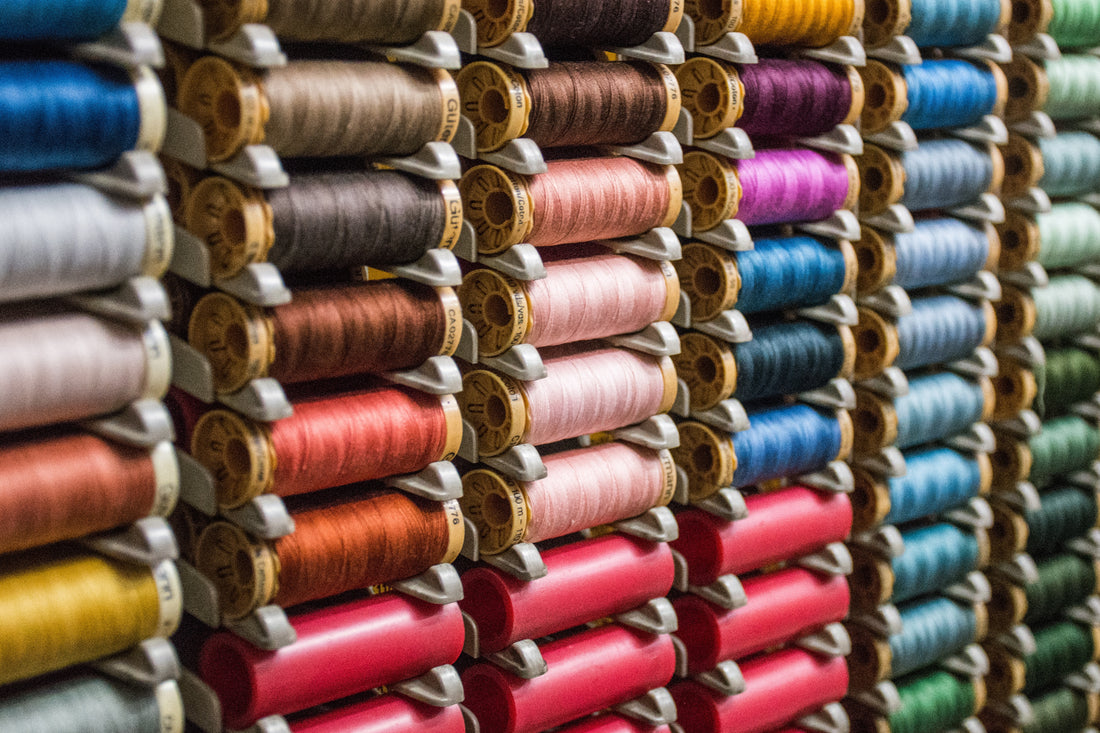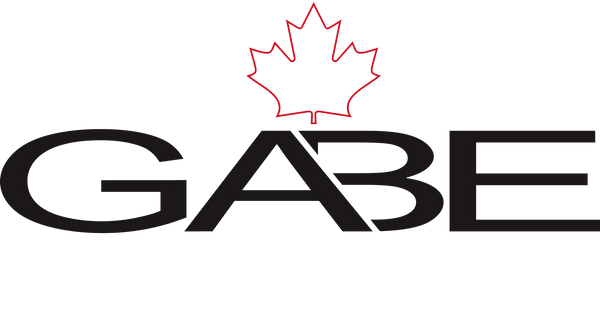
Domestic vs Overseas Manufacturing: Making the Choice as a Sustainable Clothing Brand
Share
For clothing brands committed to sustainability, aligning your choice of manufacturer with your values and mission is critical. Your choice of manufacturer will influence your reputation, quality control, and profitability.
Understanding the complexities of the manufacturing landscape is the first stitch in producing sustainable, high-quality clothing. Let's talk about the considerations your brand should understand before choosing a domestic vs overseas clothing manufacturer.
Domestic vs Overseas Manufacturing: Some Key Considerations
As with any significant business decision, the choice between domestic and overseas manufacturing hinges on a variety of factors. From cost considerations to sustainability practices, every element plays a crucial role in shaping your brand's future.
To ease your decision-making process, let's look at these critical factors side by side.
| Consideration | Domestic Manufacturing | Overseas Manufacturing |
|---|---|---|
| Cost | Typically higher due to labor costs and strict regulations | Lower, thanks to affordable labor and less stringent regulations |
| Quality | Consistently high, with stringent quality controls | Can vary depending on the manufacturer |
| Lead Time | Shorter, due to proximity | Longer, due to distance and potential customs delays |
| Sustainability Practices | Often more transparent and compliant with local environmental regulations | Can be less transparent, varying by country and manufacturer |
| Communication | Easier due to no language barrier and similar time zones | Can be challenging due to language differences and time zone gaps |
| Control | Higher, with easier visits and checks | Lower, due to distance and less direct oversight |
It's important to note that these are generalizations. The actual experiences can differ based on the specific domestic or overseas manufacturer you choose. Let's dive deeper into each factor.
Cost: While the lower costs of overseas manufacturing can be tempting, it's essential to consider the potential hidden costs such as shipping, customs duties, and potential reworks if quality doesn't meet your standards. Domestic manufacturing, while more expensive upfront, can offer savings in terms of shorter lead times, lower shipping costs, and fewer quality issues.
Quality: The adage "you get what you pay for" often holds in manufacturing. Domestic manufacturers tend to deliver higher quality products due to strict regulations and standards. While overseas manufacturers can provide quality products, it can be more challenging to ensure consistency.
Lead Time: Proximity matters when it comes to lead time. Domestic manufacturers often deliver faster, which can be crucial for brands with tight schedules. Overseas manufacturing can entail longer lead times due to distance and potential delays in customs.
Sustainability Practices: Transparency is key to sustainability. Domestic manufacturers are often more transparent about their practices and follow local environmental regulations. Overseas manufacturers' sustainability practices can vary widely, and their transparency may be less guaranteed.
Communication: Clear and timely communication is vital in managing manufacturing processes. Language barriers and time zone differences can make communication with overseas manufacturers more challenging. With domestic manufacturers, communication tends to be more streamlined, enabling quicker problem resolution.
Control: Being able to easily visit the manufacturing site and check on progress is a significant advantage of domestic manufacturing. The physical distance with overseas manufacturers makes it more challenging to maintain the same level of control and oversight.
In-Depth Examination of Domestic Manufacturing
When talking about domestic manufacturing, there are numerous factors to consider.
Advantages of Domestic Manufacturing
Quality and Standards: Domestic manufacturers often adhere to higher quality standards compared to their overseas counterparts. This can translate to superior quality clothing, which can boost your brand reputation and customer satisfaction. Moreover, domestic manufacturers are more likely to comply with labor and environmental regulations, ensuring ethical and sustainable practices.
Communication and Transparency: When working with a domestic manufacturer, you can expect better communication due to shared language and cultural understanding. This can significantly enhance your working relationship, making problem-solving and collaboration more efficient. There's also a greater degree of transparency since you can easily visit the manufacturing site to inspect their operations and sustainability practices.
Quick Turnaround Time: Domestic manufacturers typically offer faster turnaround times because of the shorter supply chains. This enables quicker reactions to fashion trends, helping your brand stay current and competitive. Moreover, shorter lead times can mean less inventory, reducing storage costs and waste.
Challenges of Domestic Manufacturing
Cost: The most significant disadvantage of domestic manufacturing is the higher cost. Higher wages, stricter regulations, and other overheads can make domestic manufacturing more expensive than overseas options.
Limited Capacity and Capabilities: Some domestic manufacturers may not have the capacity to produce large quantities or the capabilities to produce certain types of clothing.
In-Depth Examination of Overseas Manufacturing
Advantages of Overseas Manufacturing
Lower Costs: The biggest advantage of overseas manufacturing is the lower cost. Lower labor and production costs can drastically reduce the cost per unit, making it an attractive option for clothing brands.
Large Scale Production: Overseas manufacturers often have larger capacities, which is advantageous for brands looking to produce large quantities.
Diverse Manufacturing Capabilities: Many overseas manufacturers have diverse capabilities, meaning they can produce a wide variety of clothing types.
Challenges of Overseas Manufacturing
Communication Issues: Language barriers, cultural differences, and time zone differences can make communication with overseas manufacturers challenging.
Quality Control Issues: Quality control can be more challenging when dealing with overseas manufacturers, potentially leading to inconsistent product quality.
Longer Lead Times: Longer supply chains can mean longer lead times, which can complicate inventory management and make reacting to fashion trends more difficult.
Ethical and Sustainability Concerns: Overseas manufacturers may not adhere to the same ethical and sustainability standards.
Steps to Choosing the Right Manufacturer for Your Brand
Making the choice between domestic and overseas manufacturing isn't a decision to take lightly. Here are some steps to guide you through the process.
Define Your Objective: Your brand's mission and values should be the guiding force behind your manufacturing choice. If you prioritize sustainability and local production, a domestic manufacturer may align better with your goals. If cost-effectiveness is your primary concern, you might lean towards overseas manufacturing. Understanding your priorities will help shape your decision-making process.
Research Potential Manufacturers: Once your objectives are clear, it's time to start your search. Whether you're looking at domestic or overseas manufacturers, make sure to research their reputation, track record, quality control procedures, and sustainability practices. Check out online reviews, ask for client references, and speak directly with the manufacturers to get a sense of their capabilities.
Request Samples: Always request samples before making a decision. Samples will give you a tangible sense of the quality, workmanship, and sustainability practices of the manufacturer. Compare samples from different manufacturers to get a broader perspective.
Consider the Full Cost: As mentioned earlier, it's essential to consider all the costs involved in manufacturing - not just the production costs. This includes shipping, customs duties, potential reworks for quality issues, and even the 'cost' of longer lead times. A holistic view of the costs will give you a more accurate picture.
Evaluate Communication: Effective communication is vital in any business relationship. Evaluate how responsive, clear, and transparent the manufacturer is in their communication. This will play a significant role when you're working with them on a regular basis.
Visit the Manufacturing Site: If possible, visit the manufacturing site. This will give you firsthand experience of their operations, quality control measures, and sustainability practices. If overseas and a visit isn't feasible, consider hiring a local auditor to check on the manufacturing conditions.
Start with a Small Order: Before committing to a large order, start with a small one. This will allow you to evaluate the manufacturer's performance in a real-world scenario without taking on too much risk.
Conclusion: Making the Best Decision for Your Clothing Brand
Ultimately, the choice between domestic and overseas manufacturing is a complex one, with no one-size-fits-all answer. It comes down to weighing the benefits and drawbacks of each option against the priorities and values of your clothing brand.
If your brand puts a premium on quality, sustainability, and ethical practices, domestic manufacturing might be the right choice for you. Though the costs may be higher, the potential for increased customer satisfaction and brand reputation can make it a worthwhile investment.
If, on the other hand, your brand needs large-scale production and cost-efficiency to thrive, overseas manufacturing can offer compelling advantages. However, it's crucial to navigate this path carefully, ensuring that cost savings do not compromise the quality of your products or contradict your brand values.
No matter which path you choose, remember that the relationship you cultivate with your manufacturer can significantly influence your success. Clear communication, shared expectations, and a commitment to collaboration can help you navigate the challenges and maximize the benefits of your chosen manufacturing route.
Lastly, always be open to re-evaluating your decision as your brand grows and the business landscape evolves. In the ever-changing world of fashion, flexibility and adaptability are key.
By making informed decisions that align with your brand's mission and values, you can navigate the world of clothing manufacturing confidently and effectively, crafting a brand that stands out in the marketplace and resonates with your target audience.
Remember, the journey of sustainable and ethical fashion is a constant learning process. The choice of manufacturing is not just about cost and efficiency, but is a reflection of what your brand stands for and the world you aim to create through your work. Choose wisely, and keep making strides towards a more sustainable and ethical future in fashion.
